Hear it from the best: How to have a strong community for your project
From merch strategy to community calls, we’re going to take a look at how some of the projects go about cultivating their teams.
— OnlyDust
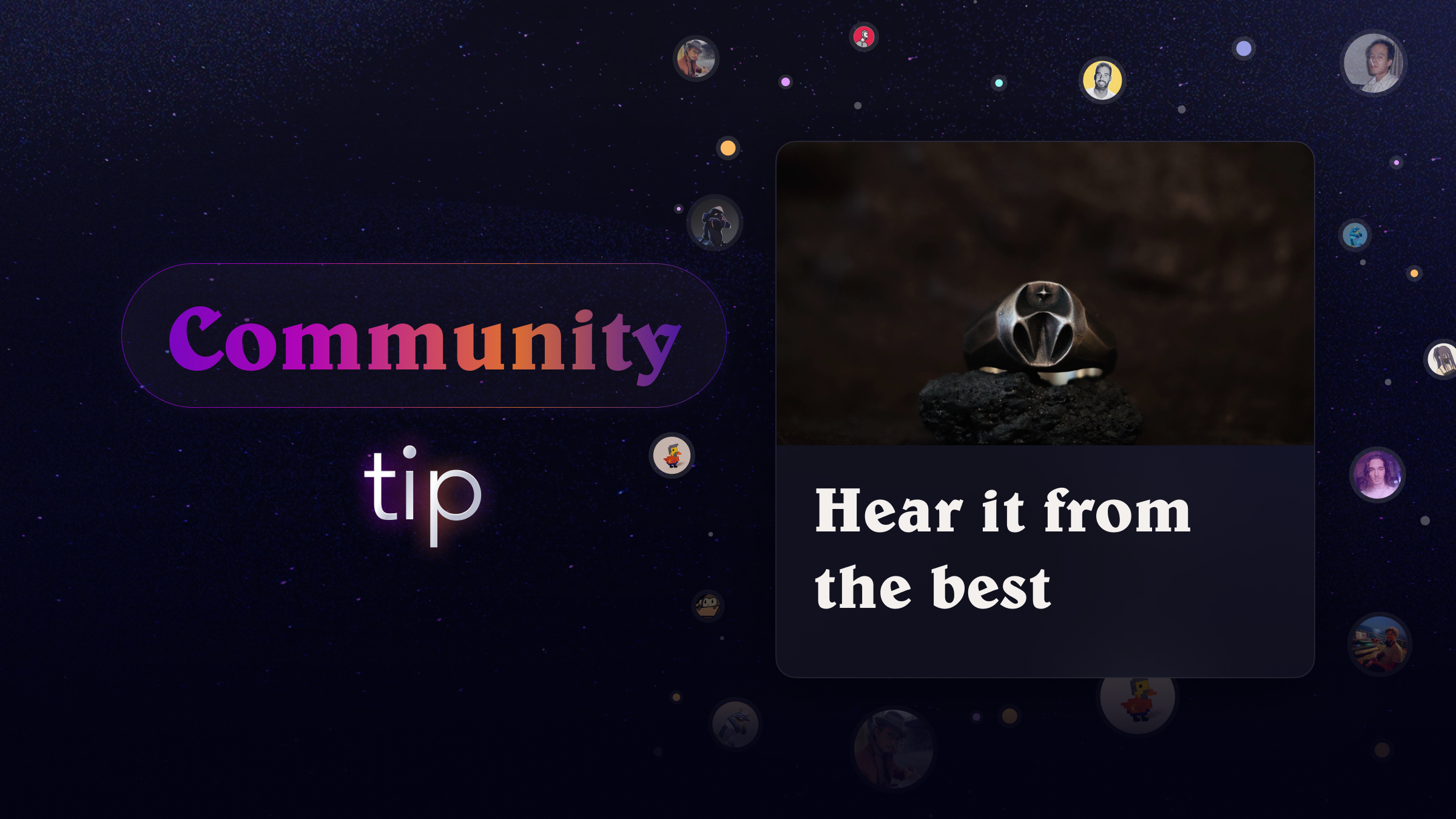
Have you ever heard the saying “if you want to go fast, go alone. If you want to go far, go together”?
Not bad to summarise open source, right? Kudos to Richard Schneeman (”How to Open Source”) for this nice comparison!
But let’s face it, sometimes building and nurturing a team of devoted contributors can feel overwhelming…
But we’ve got your back!
So why don’t we take a quick look at how project leads at OnlyDust do it?
From merch strategy to community calls, we’re going to take a look at how some of the projects go about cultivating their teams. Treat this article as a sort of checklist and see if you can take a leaf out of their book.
Let’s go!
✅ Are you welcoming?
When talking to project leads on OnlyDust, we noticed that one of the most common things that was often done to engage with their community was to welcome newcomers and ask them how they can help. That way, it was easier to guide them on their first mission.
Whether talking to Naps62, project lead for Iron Wallet, tdelabro, one of project leads for Madara or Raphaël for Orion, they all agreed that it was important to connect with new contributors that showed an interest to the project.
For Madara, when a newcomer joins their Telegram group, they often will start off by saying hello and asking how they can help. A project lead will then seek the opportunity to DM the newbie and ask them about their skill levels.
From there, they will give them ressources to learn from or suggest issues that they would be able to tackle straight on from the codebase. Hence why it is important to have a list of easy to find resources for newcomers to explore (c.f below), such as a Getting Started Guide, overview etc.

For Iron Wallet, similar to Madara, when a newcomer shows interest to the project, project lead Naps62 will equally ask them to share their skill levels in order to see where the person can be the most productive. He will then ask them to first scroll through open issues or if they are keen, try the app themselves and find areas that they would like to improve. This exchange helps advance the project furthermore.
For Orion, a step by step tutorial is sent to all newcomers on how to contribute to the project (illustration below).
Raphaël, one of the maintainers for Orion, also makes sure that contributors have a well-structured repository so that the code is clear and ready to use. It was also equally important for them to have comprehensive documentation that undergoes regular updates. They created a script to generate doc from docstring in order for it to be updated at each new PR.
Cool idea, no?
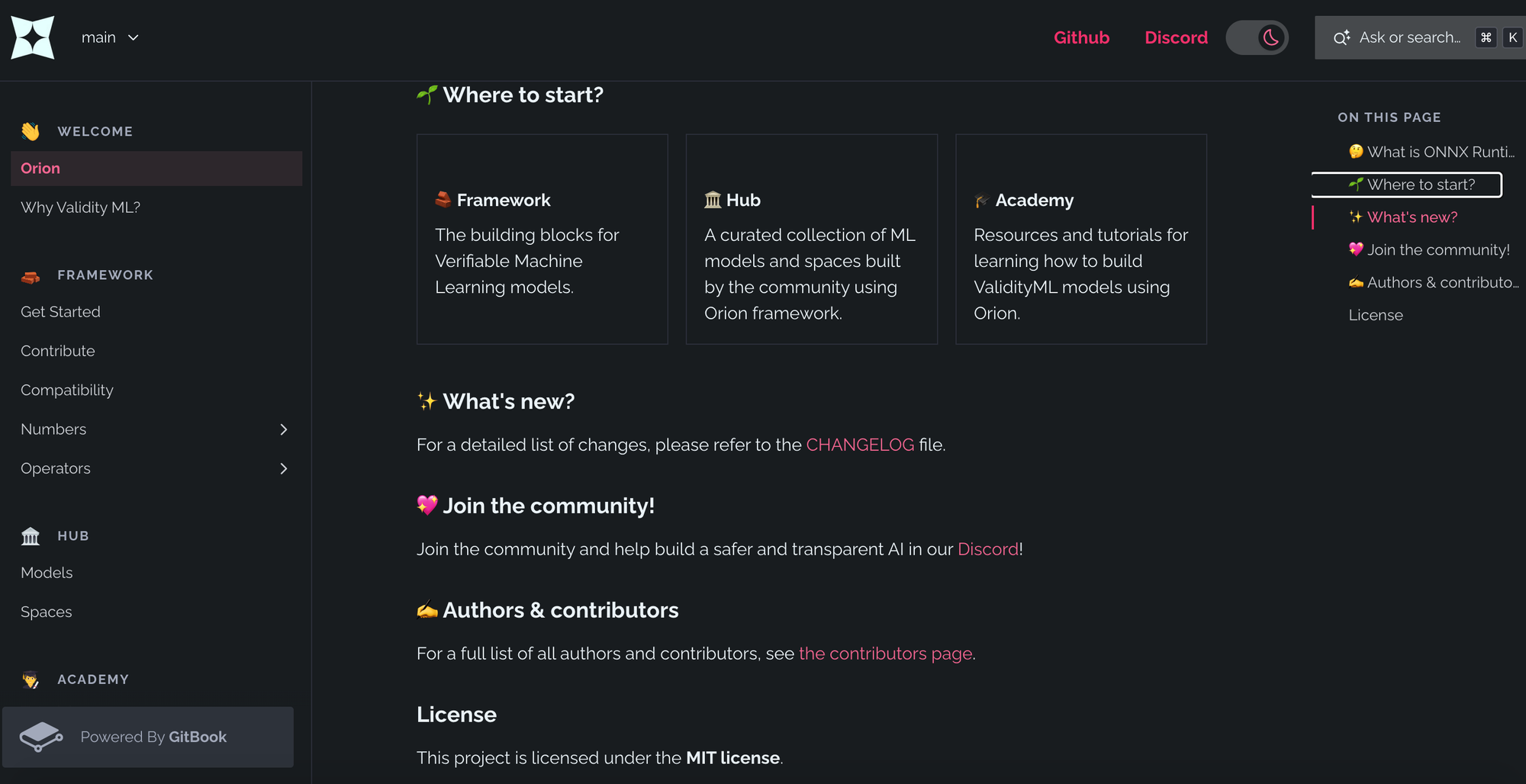
As we can see from these examples, it is important to exchange with newcomers to make them feel at ease and a part of their new team.
Of course, this can get more difficult when the group goes up to 1K members!
But if you are able to, extending a warm welcome to newcomers and guiding them to resources to read or issues to tackle is already very helpful.

✅ Are you engaging?
Another way to build a strong cohesion within the community is to offer regular updates. Most of the times it can be done through discussions on GitHub or sharing news in your channel of choice. For example, Orion often communicates their new releases via their Telegram chat and each month they highlight some of the releases on X (Twitter).
Others do “Community Calls”. Not only does it create engaging content, but it also offer an opportunity to stay in contact with your community on a regular basis.
Madara and Dojo are great examples of this.
On a regular basis, they invite their members to a “Community Call”. But, it is also open for all!
The idea behind these “Community Calls” is to discuss the latest project updates, share insights and equally gather feedback. It’s also a great way to value input from the community and make team members feel useful.
For Madara, these calls are regularly suggested in their “discussion” page on GitHub where an agenda is proposed, a link to attend the call is given and an invite link to put in the Google Agenda. So there is no way you would not be able to miss it 😉!
It is then communicated more widely on their different communication channels such as X (Twitter), Telegram or Discord. Below is an example of a tweet from Dojo, making sure that their followers know when the next call will be.
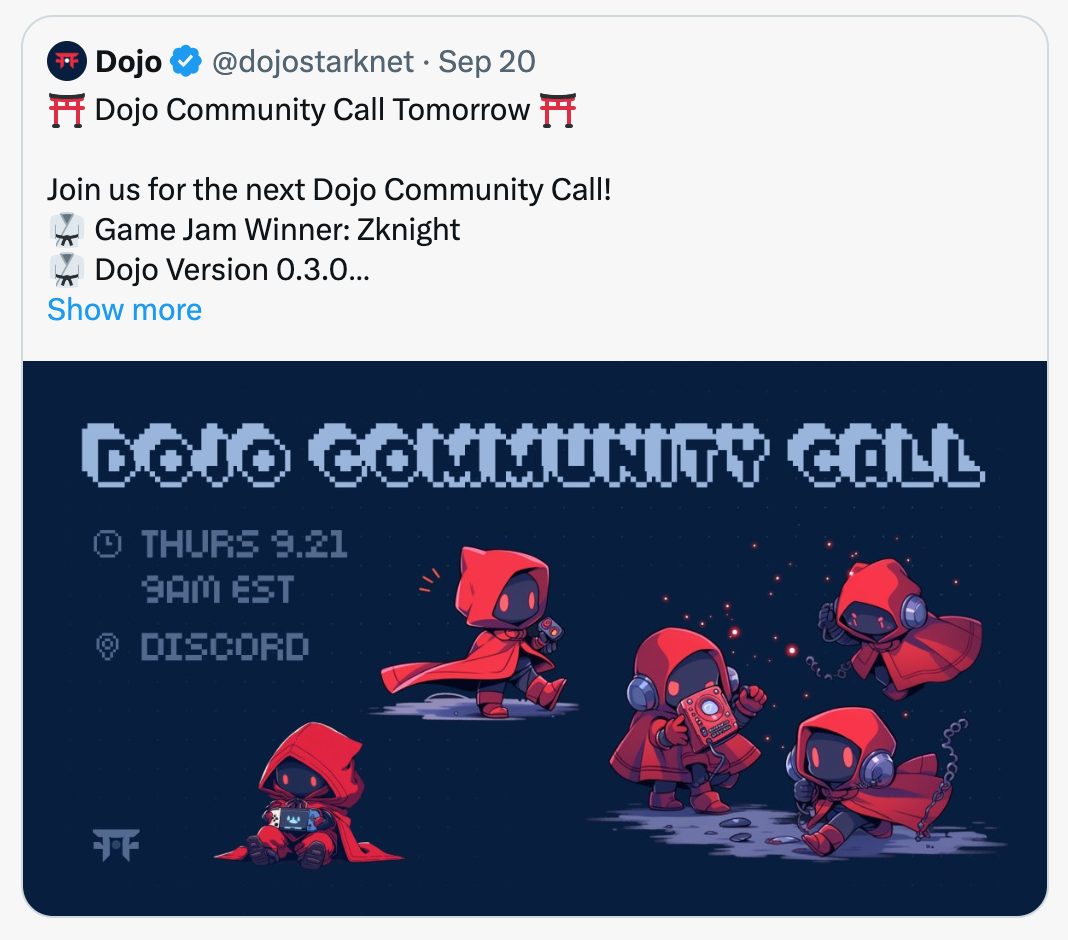
For Madara, they will also announce it via the Starknet ecosystem, which can bring in quite a bit of listeners. The calls are then registered on their YouTube page for anyone that is interested to listen after.
Not bad for content creation, right?!
They also do live calls on X (known as X spaces) which is also a smart way to reach out to the wider public who is interested in the ecosystem and who may want to participate in the adventure.
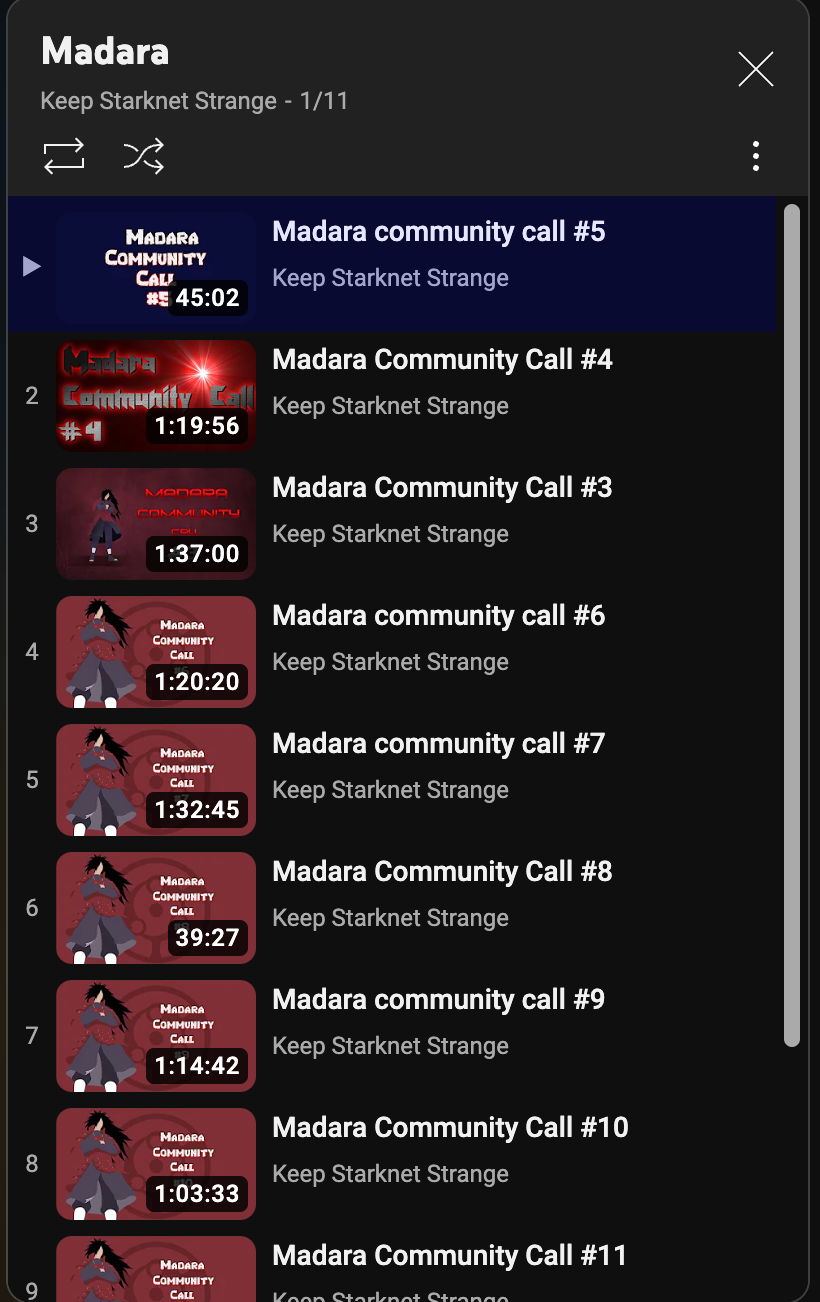
For Orion, “Community Calls” was not the preferred method, however project lead Raphäel explains that he makes sure that he is available when needed.
For those that are on the shy side that do not like to speak up in calls, messaging is a great way to stay engaged with members as proved with this project.
Being open allows Raphaël to regular get feedbacks from contributors in DMs and to improve developer experience as much as possible. For example, following a feedback from a contributor, Raphaël created a script that generate Cairo tests from Python code so that contributors can easily write tests.
✅ Are you being fun?
If calls aren’t your thing, but you are looking for a fun way to engage with your community, you can opt for a “merch” strategy. It is a friendly way to make your members feel part of the team, especially when oftentimes you are working with people from all around the world! Having a fun item not only acts as a tool for visibility (which can attract new members) but also provides a shared identity.
Whether it’s t-shirts for Madara, rings for OnlyDust or stickers for Dojo, there are many different ways that you can create a sense of “belonging” with your community.
At OnlyDust, there are just 4 rings available. And each trimestre, the committee of those that hold the ring will designate 2 others to be a ring bearer 😊! And what does that give you? Access to all community events 😮.
Talk about a ring to rule them all, right?!

At Madara, project lead Abdel enjoys designing t-shirts for the members and giving them out at events! Thanks to AI tools or with the help of freelancers, each member gets to have a cool t-shirt as a memory of the event that they participated in. Plus, you always get a limited edition! Oftentimes, discussions will be posted on their GitHub to get ideas rolling.
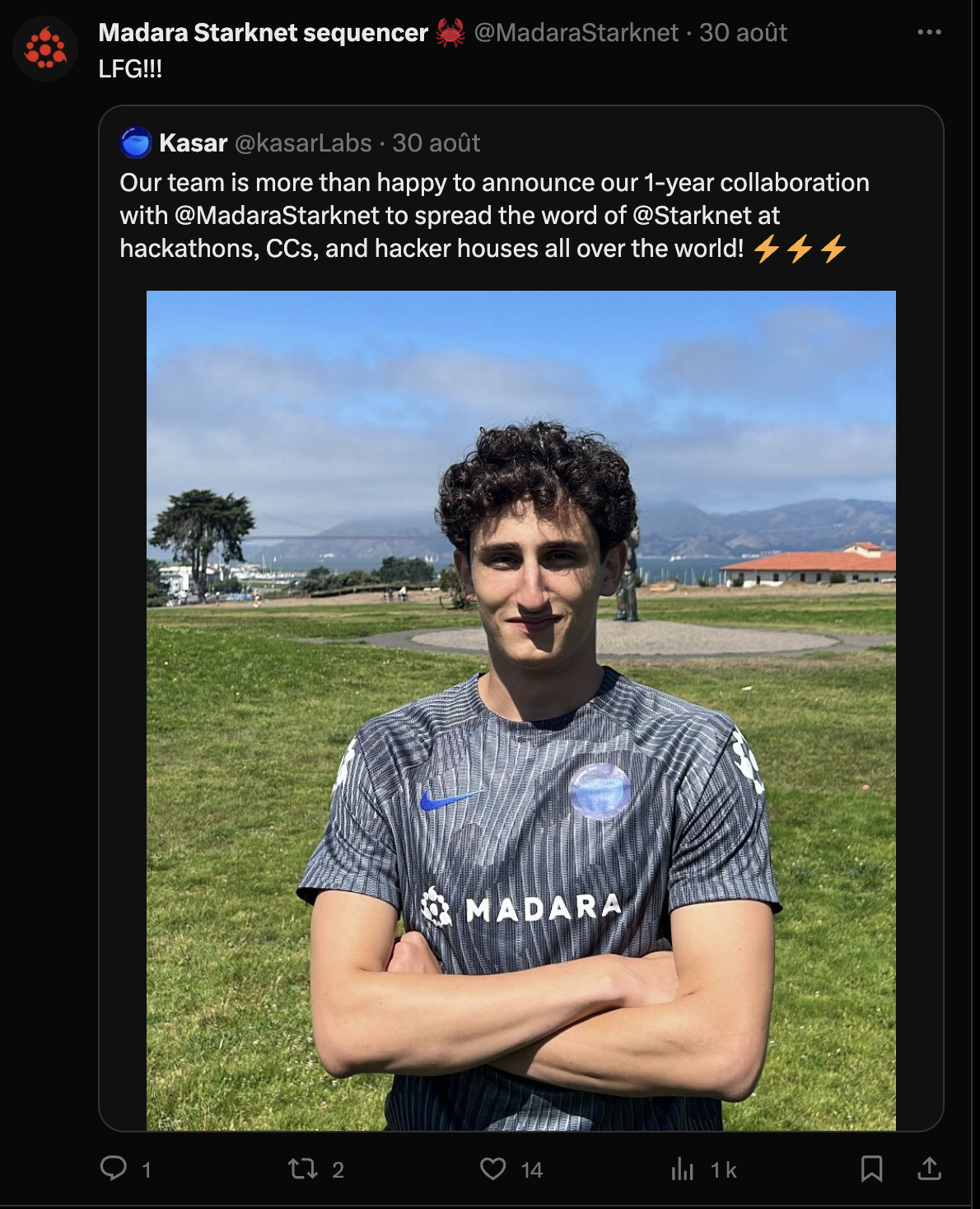
At Dojo, they have fun with creating stickers, t-shirts, memes and even have a special way to say hello: Ohayo! Not only is it a nice way to start off your day 😊, but it gives a very strong community bond.
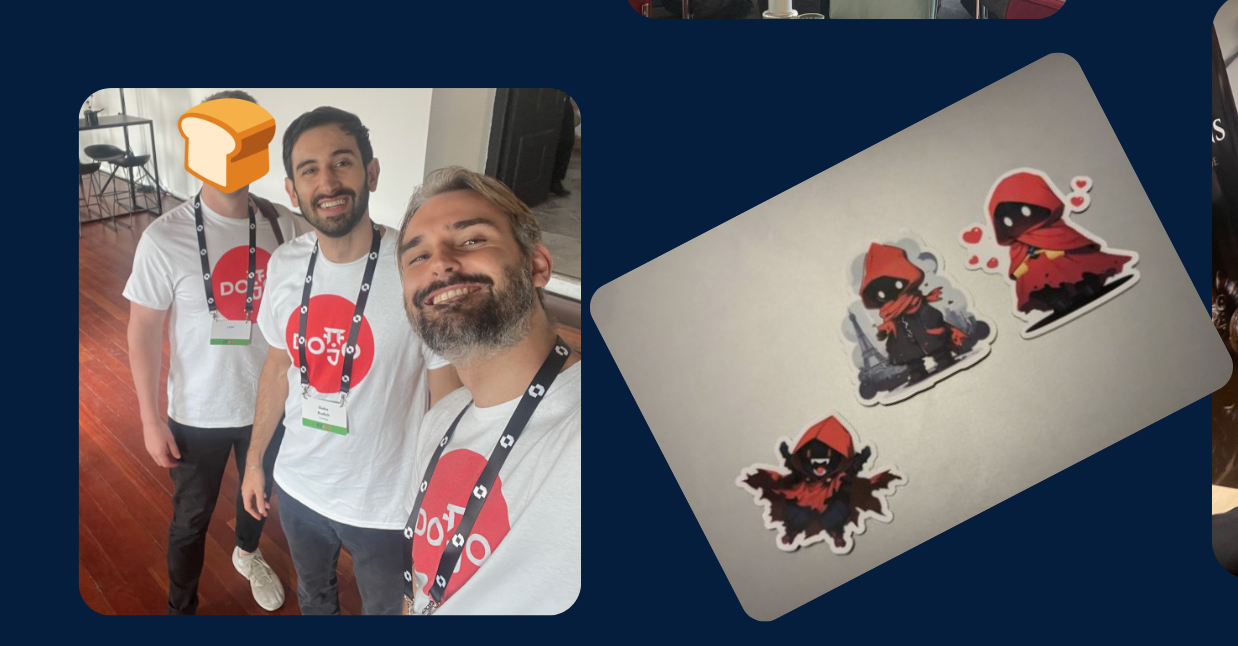
✅ Are you grateful?
It’s one thing to provide fun things for the team, another to offer a great onboarding, but it’s also equally important to show acknowledgment for the work done.
Even if you may feel like your appreciation is explicit, it doesn’t hurt to acknowledge it out loud. It’s common sense that when team members feel valued, they are more likely to stay engaged and may highly likely speak of you to others! Which in turn will attract other awesome contributors.
For the project Satoru, project lead Abdel makes sure that contributors are aware that a payment reward will be sent, usually the day of. He communicates on the fact that rewards are coming and he follows suit by paying directly. It is a great way to show that you practice what you preach! Members are keen to participate and are happy to be valued for their work.
Understandably, not every project may have a budget, but every gesture counts. For example, you can give shoutouts to contributors who excelled on a particular task through blog posts, social media channels, or project newsletters.
✅ And finally, are you visible?
Now, all of the above is great when you start to have a group of contributors for your project, but you will also need to think about how to attract members, especially at the beginning.
This is where a little communication comes in…
So let the world know that you exist! Share your project! Spread the love!
Make. It. Easy. To. Find. You.
Add relevant topics, descriptions and detailed documentation to your project on GitHub to make you more visible. When contributors are searching for projects, these elements can help them discover yours more easily and it is highly appreciable.
Oh, and please, share how to contact you. Nothing is more frustrating than not knowing how to reach project leads or where to go to connect with other team members.
And tada, your checklist is all set 🙂!